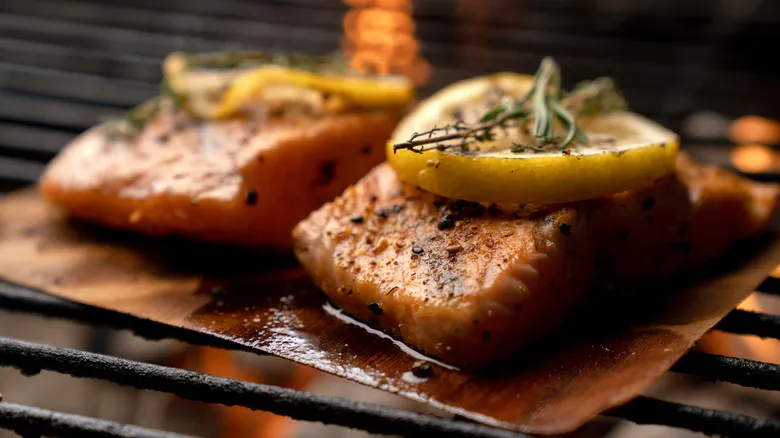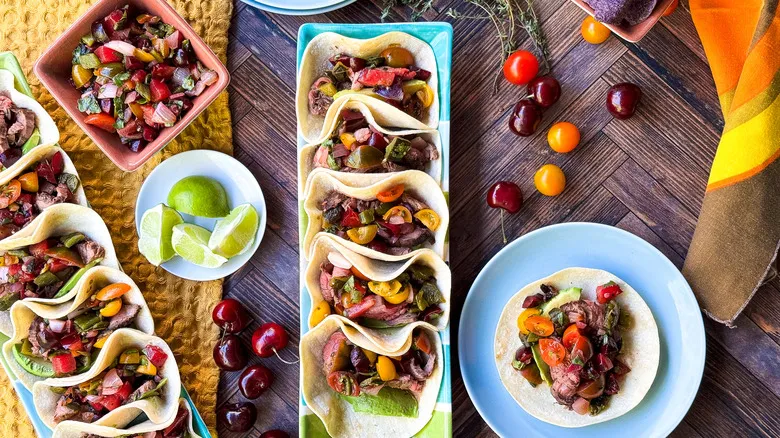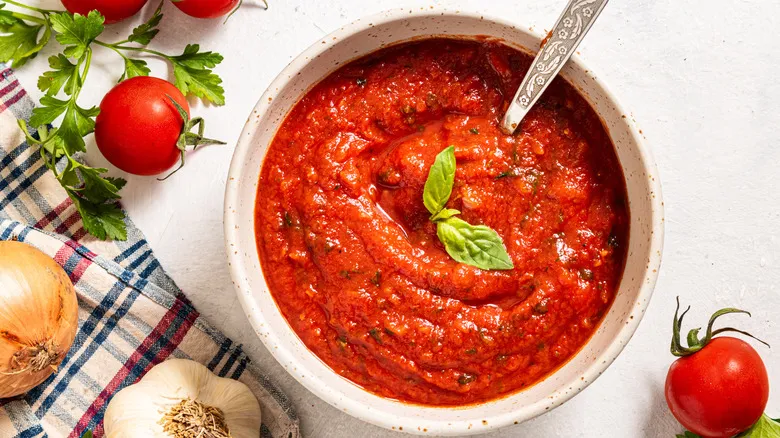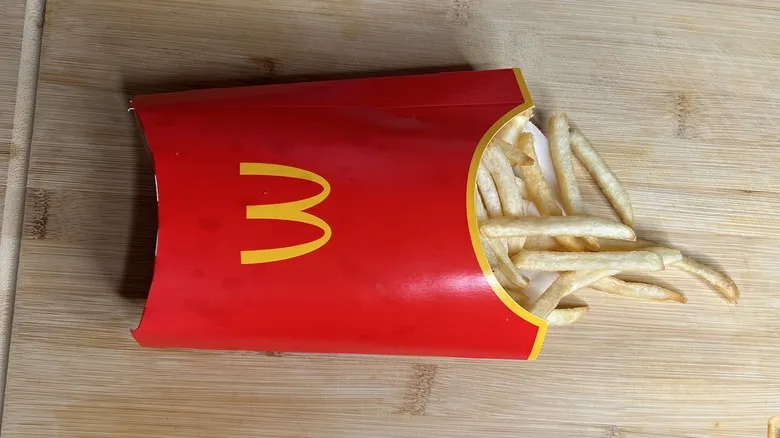Tips for plump and juicy grilled fish
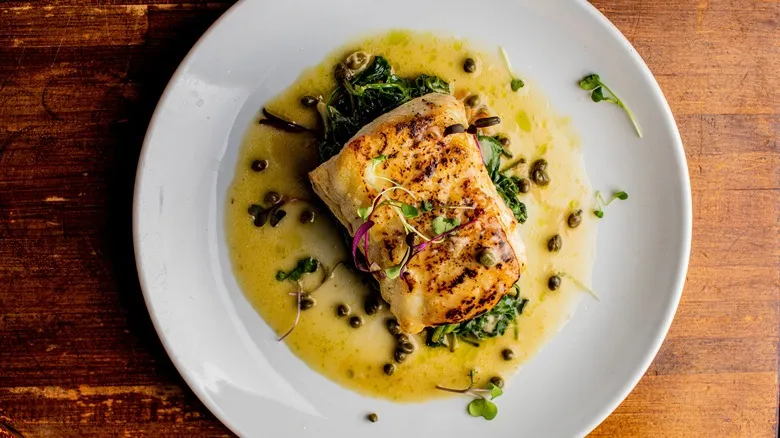
The finest grilled fish features a perfectly seared exterior while remaining juicy and tender within. But how can you achieve this level of excellence? According to Bautista, the answer is straightforward: avoid overcooking your fish. Similar to steak, Bautista advises that "Most fish should not be cooked beyond medium." An ideal internal temperature ranges from 140 to 145 degrees Fahrenheit. Utilizing a probe thermometer is a dependable method to ensure your fish is cooked just right.
The USDA recommends an internal temperature of 145 degrees Fahrenheit for fish, though many professional chefs advocate for slightly lower temperatures to prevent dryness. A thermometer is an infallible tool to confirm that your fish is at the optimal temperature when you take it off the grill. Additionally, you can determine that your fish is fully cooked if it appears opaque and flakes easily with a fork, offering no resistance.
Another effective technique to keep fish from drying out on the grill is to use a cedar plank. Grilling fish on a cedar plank helps retain moisture by providing indirect heat, and it’s an affordable method that elevates the flavor of salmon. For an unforgettable grilled salmon experience, consider soaking cedar planks in bourbon before grilling.
Mistakes to avoid when grilling fish
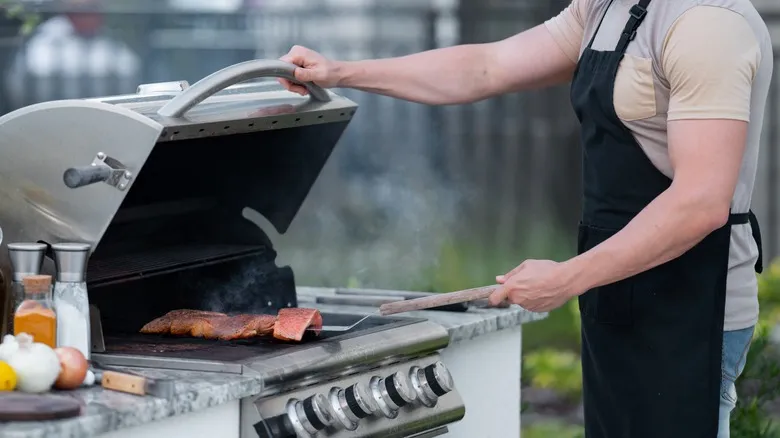
One of the most common errors people make when grilling fish, as noted by Bautista, is not allowing the grill to reach a sufficient temperature. "Lack of patience can be problematic," the professional chef explains. "Avoid flipping the fish more than once," he recommends. Flipping the fish too frequently or too early can interfere with the grilling process, potentially causing the fish to break apart or adhere to the grates.
Another pitfall to steer clear of is selecting the wrong type of fish for grilling. The ideal fish for this method are those that are firm and meaty, ensuring they won’t easily disintegrate. Salmon, halibut, grouper, and red snapper are all excellent options for the grill. Bass is also a fantastic choice due to its hearty texture and mild taste. You might want to consider Pacifico striped bass, which is chef Andrew Zimmern's top pick for flavorful grilling.
If you struggle with grilling directly on the grates, consider using a pineapple plank instead of a cedar plank for an exceptional grilled fish experience. Crafting a grilling plank from slices of fruit like pineapple or lemon is a simple way to prevent your fish from sticking to the grill while also adding a delightful citrus flavor to your fillets.
Recommended
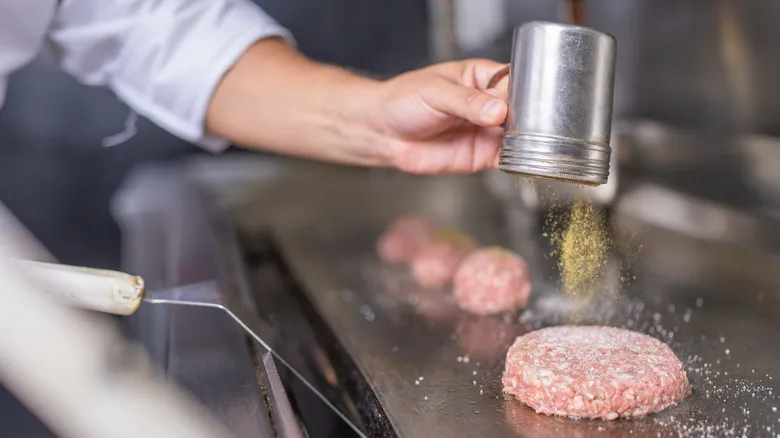
Burger 101: When To Season Beef For The Best Flavor Results

Why The Biggest Lobster Isn't Necessarily The Best
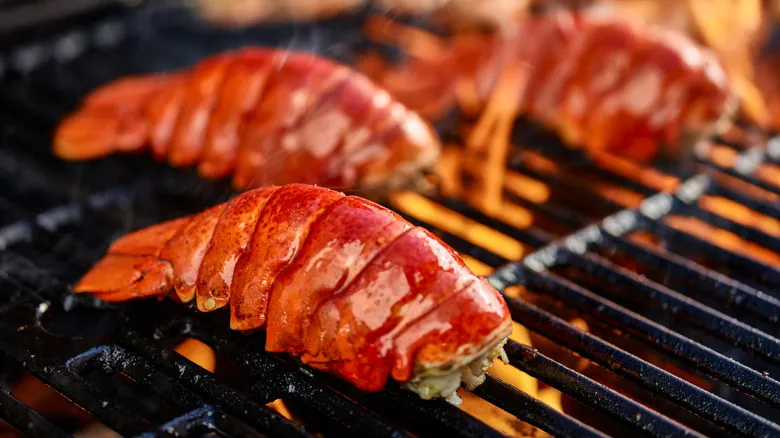
How To Prep And Grill Lobster Like A Pro
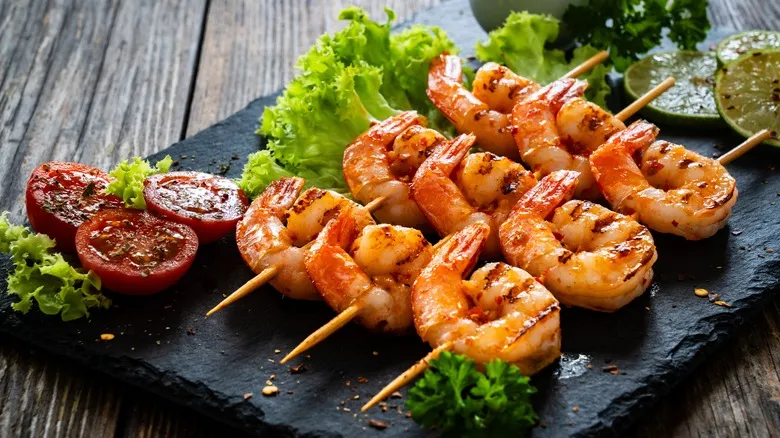
The Secret To Getting More Flavor From Your Shrimp Marinade On The Grill
Next up

